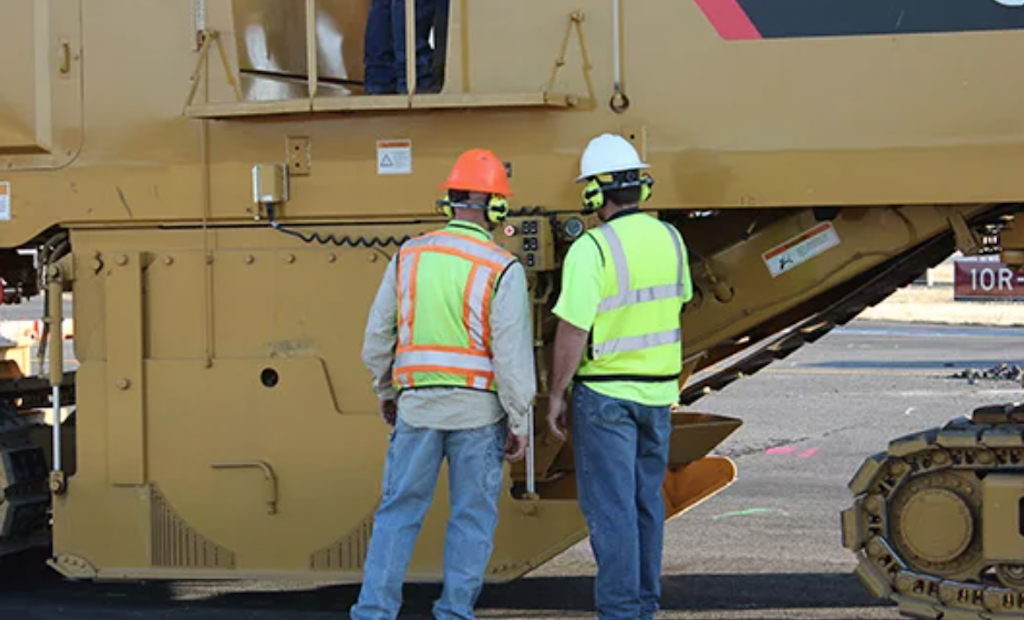Interested in Trucks?
Get Trucks articles, news and videos right in your inbox! Sign up now.
Trucks + Get AlertsWhen obstacles are overcome and good work gets done on time and under budget, that’s a great day. When an unexpected problem derails your team, there’s not much to celebrate and the pressure is on to get things back on track. It goes without saying, a team that’s connected and in sync is going to be a competitive advantage for your company. Ensuring you have the right tools to gain alignment and increase efficiency are key to ensuring success.
Leveraging wireless communication technology will help your team stay connected and on top of things, enabling them to respond quickly as issues come up. Workers are no longer isolated, but fully engaged and ready to coordinate easily with others to tackle problems.
Here are four ways that winning organizations are addressing problems, and how they incorporate wireless headsets to stay at the top of their game.
1. What's the problem?
First step: clearly define the issue. Sure, there are the easy problems that have a straightforward fix that can be completed by one guy, like replacing a gasket on a motor to solve an oil leak. Great. Let’s consider the more challenging issues that are intermittent or elusive and have been haunting your to-do list. These require a deeper dive with all hands on deck. Here’s what the experts offer:
- Collect data – More than just jotting down numbers or labeling a graph, include multiple variables in your investigation. Go wide and take in even seemingly unrelated factors.
- Involve others – Experience can make anyone an expert and you can’t tell by the color of their hard hat. At this stage, more information is better.
- Ask different questions – Play detective and think about it from a different angle. Sometimes the more nagging the issue, the harder the root cause will be to pinpoint.
When your team is using a communication system that connects others from different parts of the building or job site, it becomes easier to piece the problem together. Safety always has to be at the forefront, though. Wireless headsets that offer a listen-through feature will provide situational awareness that allows you to control the level of outside sound you hear. So, while you’re focused on sleuthing out problems, you’re kept aware of equipment, alarms or nearby traffic.
Tip: Resist the urge to make a quick diagnosis here just so you can move on to the next step. Staying objective and thorough will assure success. Anything less is throwing spaghetti on the wall to see what sticks.
2. What's the fix?
Okay, you’ve isolated your problem. Here’s where you come up with a plan to deal with it.
When it’s equipment that’s slipping out of spec, calibrate it. Replace or rework materials that aren’t up to snuff so they’re usable. The more accurate the diagnosis, the more accurate the solution.
Of course, resources aren’t unlimited. Equipment upgrades or additional labor would solve a lot of problems. You may have a longer fix cycle until budget becomes available, but challenge yourself to come up with at least a partial solution. Business is about overcoming issues with strategy. Challenge accepted.
When your workplace is loud, making even a quick chat next to impossible, look for ways to communicate that won’t involve having to turn off the excavator or move away from a conveyor belt. Noise canceling technology lets you hear messages clearly the first time and avoids stopping work to talk with the team.
3. Install the fix
This step doesn’t have to describe the addition of a physical component in a literal sense. It could include changing up a job responsibility that adds an additional spotter for crane operations to help manage loads that are out of view.
It might be a quick one, too, like installing basic Wi-Fi sensors that connect existing equipment to your cloud network, or adding a quality assurance step at a workstation.
Whether it’s a simple fix or a more complex one, bring in the right mix of people and equipment and lay out the plan ahead of time. When you’re ready to implement, avoid costly mistakes and miscommunication by leveraging wireless headsets that help maintain clear and concise messaging amongst your team. Commands yelled out over a handheld radio can be misunderstood or not heard at all. “Go” and “Don’t go” have two very different meanings when a syllable gets clipped or drowned out by background noise.
4. Update your SOPs
Standard operating procedures get you uniformity and compliance. They’re ‘how’ the work gets done through easy-to-follow instructions so everyone’s on the same page. Post it where it can be easily referenced, at a workstation or a network’s shared drive.
Include a few resources for the worker to troubleshoot or quickly connect with others when a specific problem comes up and make it a part of the process.
Train for it. Communicate the changes to those who need to know. Knowledge sharing makes sense from an operational perspective and protects against a possible brain drain as key people retire or you’re hit with unexpected absenteeism.
The right communication system will enable supervisors and workers to talk hands-free, for instant feedback and a quicker learning curve.
Communicate efficiently and stay competitive
Small changes can add up to make a big impact in your organization’s ability to stay competitive and efficient. The fundamentals of basic communication are the catalyst, allowing your work team to quickly and continuously overcome any obstacles that crop up.
Learn more about how Sonetics wireless headsets can help your team overcome communication barriers and focus on delivering measurable results for your organization.






